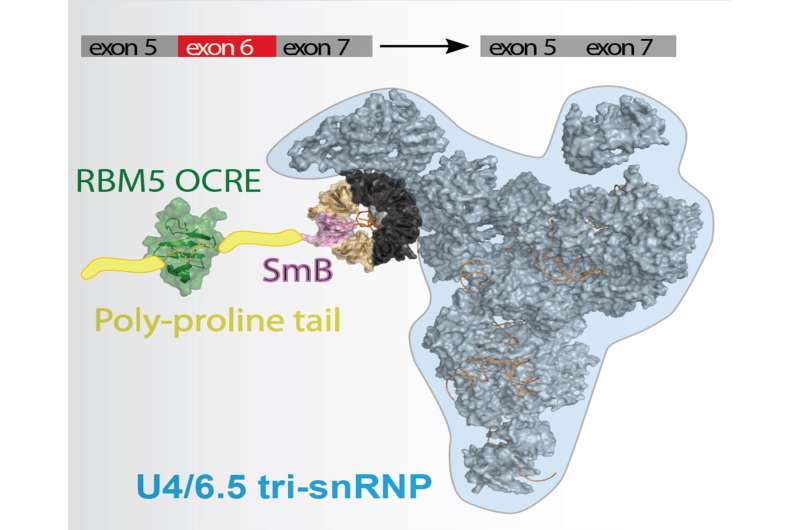The good, the bad and the spliceosome

The Fas protein can either inhibit or promote the controlled cell death (apoptosis), depending on the isoform in which it occurs. Together with international colleagues, researchers from the Helmholtz Zentrum München and the Technical University of Munich have elucidated how this decision is guided. These results provide new insights into the molecular mechanisms of tumor diseases and have now been published in eLife.
We know the problem: When assembling the parts and pieces of furniture purchased at a store, everyone uses the same blueprint. Nevertheless, the end product can differ greatly in the course of assembling the whole product over several intermediate steps. Something quite similar can happen during the production of proteins from genes. The genome (the blueprint) is first transcribed into a messenger molecule, the mRNA, and then translated into proteins (furniture). However, the mRNA can be altered and trimmed during intermediate steps in a process called alternative splicing, so that ultimately different proteins are produced from the same blueprint.
An interesting example of alternative splicing is the mRNA of the Fas gene. Depending on which intermediate steps take place, the finished protein can either prevent or promote controlled cell death (apoptosis). "The right balance between these opposing results is dependent on the cell type and can also lead to uncontrolled cell growth and cancer when alternative splicing is dysregulated," explains Professor Michael Sattler, Director of the Institute of Structural Biology (STB) at Helmholtz Zentrum München. In collaboration with Professor Juan Valcárcel Juárez of the Centre de Regulació Genòmica (CRG) in Barcelona, he and his team have now gained insight into which intermediate steps are taken and how these lead to different isoforms of the Fas protein.
"The focus of our interest was the protein RBM5, which often exhibits mutations in lung tumors," says Dr. André Mourão of the STB. "RBM5 helps to bring the spliceosome to the mRNA by binding to a spliceosomal protein", explains coauthor Dr. Sophie Bonnal of the CRG Barcelona. In this central position, RBM5 decides which isoform of Fas is expressed and thus controls the balance between the two different isoforms.
"By employing nuclear magnetic resonance (NMR) spectroscopy at the Bavarian NMR Center in Garching, we were able to elucidate the spatial structure of RBM5-OCRE in complex with SmN (a protein present in the spliceosome) and to understand exactly how these interaction occurs," states Sattler, who directed the study. To confirm their findings, the scientists mutated the corresponding interaction residues of the proteins and observed that the interactions no longer took place in the test tube and that the splicing activities of RBM5 in cell culture was impaired.
"The process of alternative splicing affects numerous essential functions and processes in an organism, and dysregulation can trigger cancer. That is why it is very important to precisely understand the mechanisms that regulate these processes," explains Sattler, summarizing the results. According to the authors, only a few protein interactions that influence alternative splicing by binding to spliceosomal proteins have been analyzed in such structural depth. In the future, the researchers want to determine exactly how RBM5 binds to the mRNA and whether there are additional interactions with the spliceosome, which consists of numerous other components.
More information: André Mourão et al, Structural basis for the recognition of spliceosomal SmN/B/B' proteins by the RBM5 OCRE domain in splicing regulation, eLife (2016). DOI: 10.7554/eLife.14707
Journal information: eLife
Provided by Helmholtz Association of German Research Centres


















